Average calories burned. Daily Calorie Burn: Calculate Your Needs for Weight Management
How many calories do you burn in a day. What factors influence your daily calorie expenditure. How can you calculate your personal calorie needs for weight loss, maintenance, or gain.
Understanding Calorie Burn: The Basics
Calories are units of energy that fuel our bodies for various functions, from basic survival processes to complex physical activities. The number of calories an individual burns daily is a crucial factor in weight management and overall health. But how exactly does calorie burning work?
Your body burns calories through three main mechanisms:
- Basal Metabolic Rate (BMR): The energy used for basic life-sustaining functions
- Thermic Effect of Food (TEF): Calories burned during digestion
- Physical Activity: Energy expended during movement and exercise
Understanding these components can help you better grasp your body’s energy needs and how to adjust them for your health goals.
Factors Affecting Daily Calorie Burn
The amount of calories you burn each day isn’t a fixed number. It varies based on several factors:
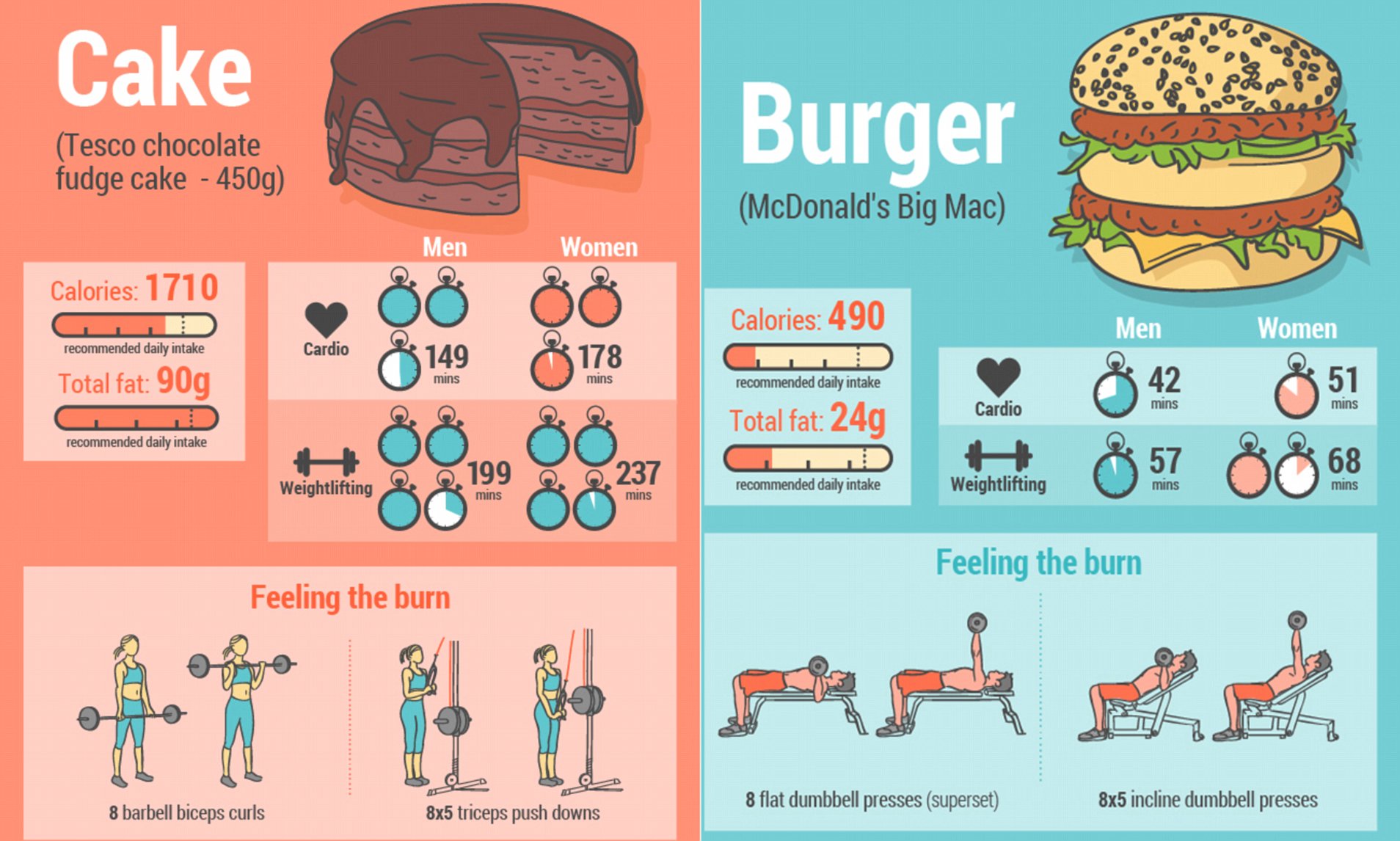
- Age: Metabolism typically slows with age
- Sex: Men generally burn more calories than women due to higher muscle mass
- Height and weight: Larger bodies require more energy
- Body composition: Muscle tissue burns more calories than fat
- Activity level: More movement equals higher calorie burn
- Genetics: Some people naturally have faster metabolisms
- Health conditions: Certain medical issues can affect metabolism
Given these variables, it’s clear that calorie needs are highly individual. What works for one person may not be suitable for another, emphasizing the importance of personalized approaches to nutrition and fitness.
Calculating Your Resting Metabolic Rate (RMR)
To determine your daily calorie needs, start by calculating your Resting Metabolic Rate (RMR). The Mifflin-St Jeor formula is a widely accepted method for this calculation:
For men: RMR = 10 × weight (kg) + 6.25 × height (cm) – 5 × age (years) + 5
For women: RMR = 10 × weight (kg) + 6.25 × height (cm) – 5 × age (years) – 161

This formula provides an estimate of the calories your body burns at rest. However, it’s important to note that this is just a starting point. Your total daily energy expenditure (TDEE) will be higher due to physical activity and other factors.
Determining Your Total Daily Energy Expenditure (TDEE)
To calculate your TDEE, multiply your RMR by an activity factor:
- Sedentary (little to no exercise): RMR × 1.2
- Lightly active (light exercise 1-3 days/week): RMR × 1.375
- Moderately active (moderate exercise 3-5 days/week): RMR × 1.55
- Very active (hard exercise 6-7 days/week): RMR × 1.725
- Extremely active (very hard exercise, physical job): RMR × 1.9
This calculation gives you an estimate of how many calories you burn in a day, accounting for both your basic metabolic needs and your activity level.
Calorie Needs for Weight Loss
To lose weight, you need to create a calorie deficit. This means consuming fewer calories than your body burns. But how much of a deficit should you aim for?
A sustainable approach is to reduce your calorie intake by 10-20% below your TDEE. For example, if your TDEE is 2,500 calories:
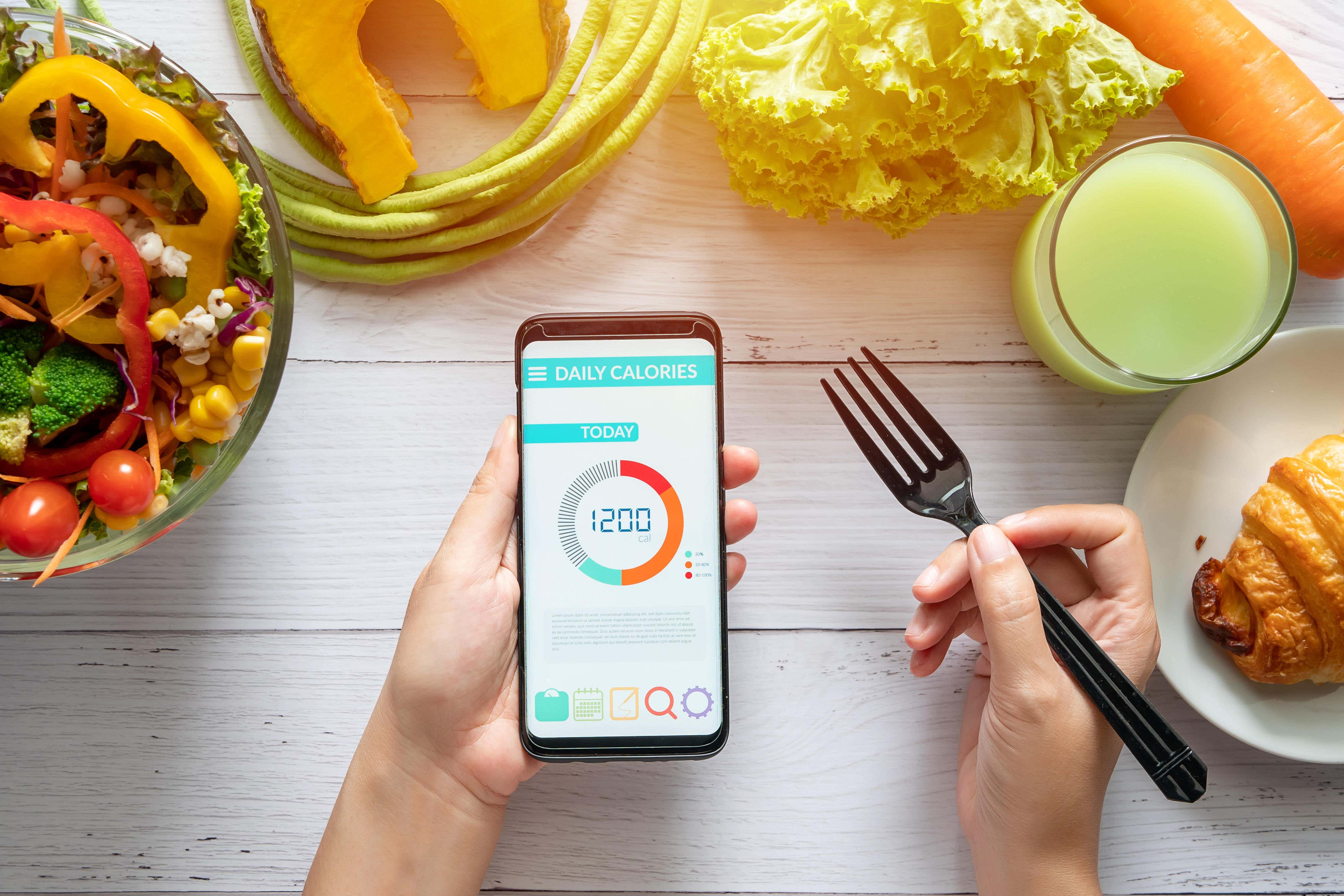
- 10% deficit: 2,500 – (2,500 × 0.1) = 2,250 calories
- 20% deficit: 2,500 – (2,500 × 0.2) = 2,000 calories
This moderate deficit allows for gradual, sustainable weight loss while minimizing the risk of muscle loss and metabolic slowdown. It’s important to combine this calorie reduction with regular physical activity and a balanced, nutrient-rich diet for optimal results.
The Importance of Gradual Weight Loss
Why is a moderate calorie deficit recommended over more extreme measures? Rapid weight loss can lead to several issues:
- Loss of muscle mass
- Nutrient deficiencies
- Metabolic adaptations that make further weight loss difficult
- Increased risk of weight regain
Aiming for a weight loss rate of 0.5-1 kg (1-2 lbs) per week is generally considered safe and sustainable for most individuals.
Maintaining Weight: Balancing Calories In and Out
If your goal is to maintain your current weight, the key is to balance your calorie intake with your calorie expenditure. In theory, this means consuming the same number of calories as your TDEE. However, in practice, it’s not always this straightforward.
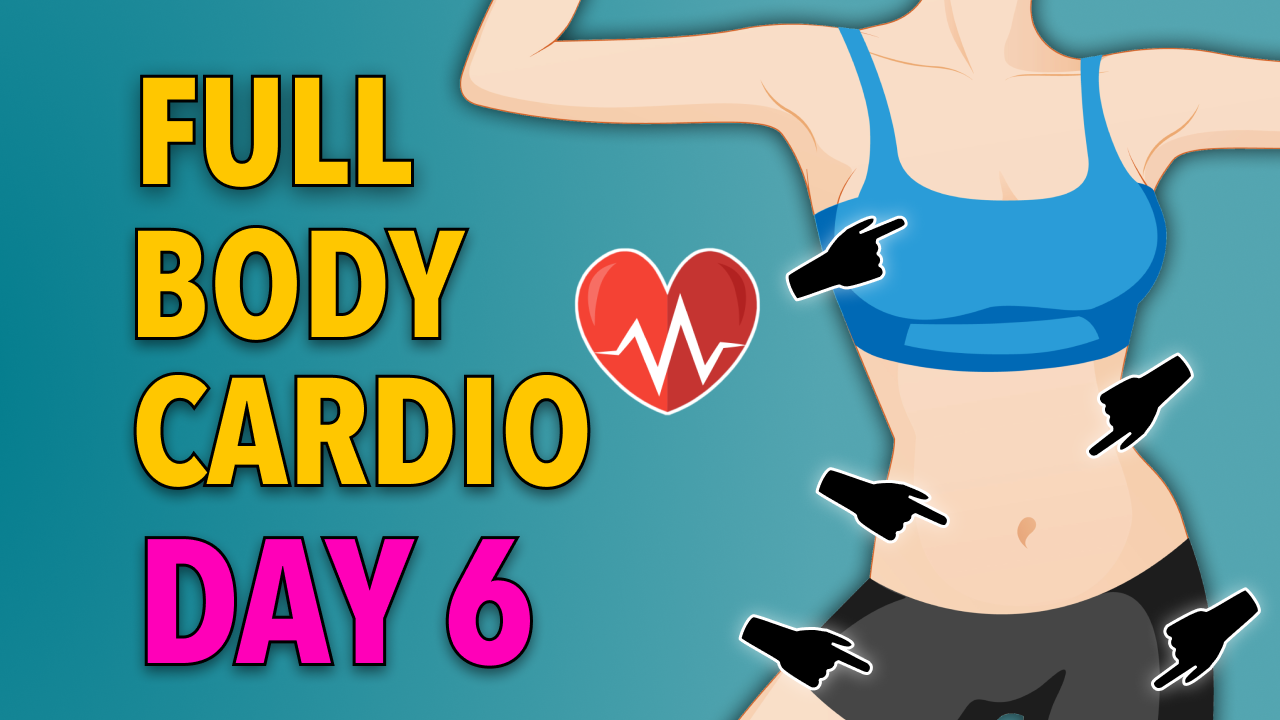
Our bodies are dynamic systems, and our calorie needs can fluctuate day to day based on factors like:
- Stress levels
- Sleep quality
- Hormonal changes
- Variations in physical activity
Therefore, weight maintenance often involves small adjustments over time. Pay attention to trends in your weight and how you feel, and make minor tweaks to your diet and activity levels as needed.
The Role of Body Composition
When maintaining weight, it’s crucial to consider body composition. You might maintain the same weight on the scale while experiencing changes in your muscle-to-fat ratio. Regular strength training and adequate protein intake can help preserve muscle mass, even if you’re not actively trying to build muscle.
Calorie Needs for Weight Gain
For those looking to gain weight, whether for athletic performance, recovery from illness, or personal preference, a calorie surplus is necessary. But how much should you increase your calorie intake?
A moderate approach is to aim for a 10-20% increase above your TDEE. For example, if your TDEE is 2,500 calories:
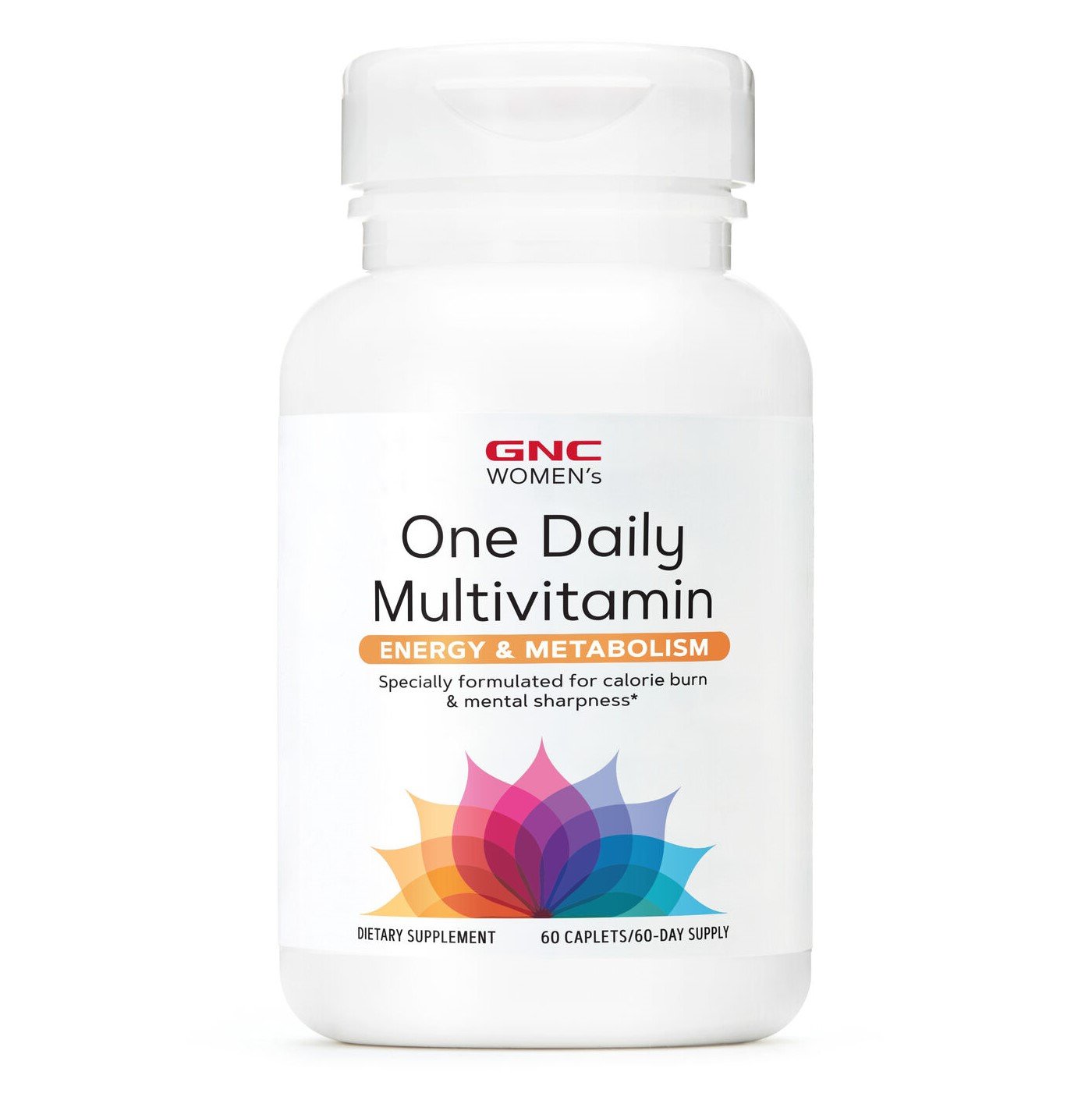
- 10% surplus: 2,500 + (2,500 × 0.1) = 2,750 calories
- 20% surplus: 2,500 + (2,500 × 0.2) = 3,000 calories
This gradual increase promotes steady weight gain while minimizing excessive fat accumulation. Combine this calorie surplus with resistance training to encourage muscle growth.
Quality of Calories for Weight Gain
When increasing calorie intake, it’s tempting to reach for calorie-dense, processed foods. However, focusing on nutrient-rich whole foods is crucial for healthy weight gain. Consider incorporating:
- Lean proteins (chicken, fish, lean beef, eggs)
- Whole grains (brown rice, quinoa, oats)
- Healthy fats (avocados, nuts, olive oil)
- Fruits and vegetables
These foods provide not only calories but also essential nutrients to support overall health and muscle growth.
Beyond Calories: The Importance of Nutrient Balance
While calorie counting is a useful tool for weight management, it’s crucial to remember that not all calories are created equal. The quality and balance of nutrients in your diet play a significant role in your overall health, energy levels, and body composition.
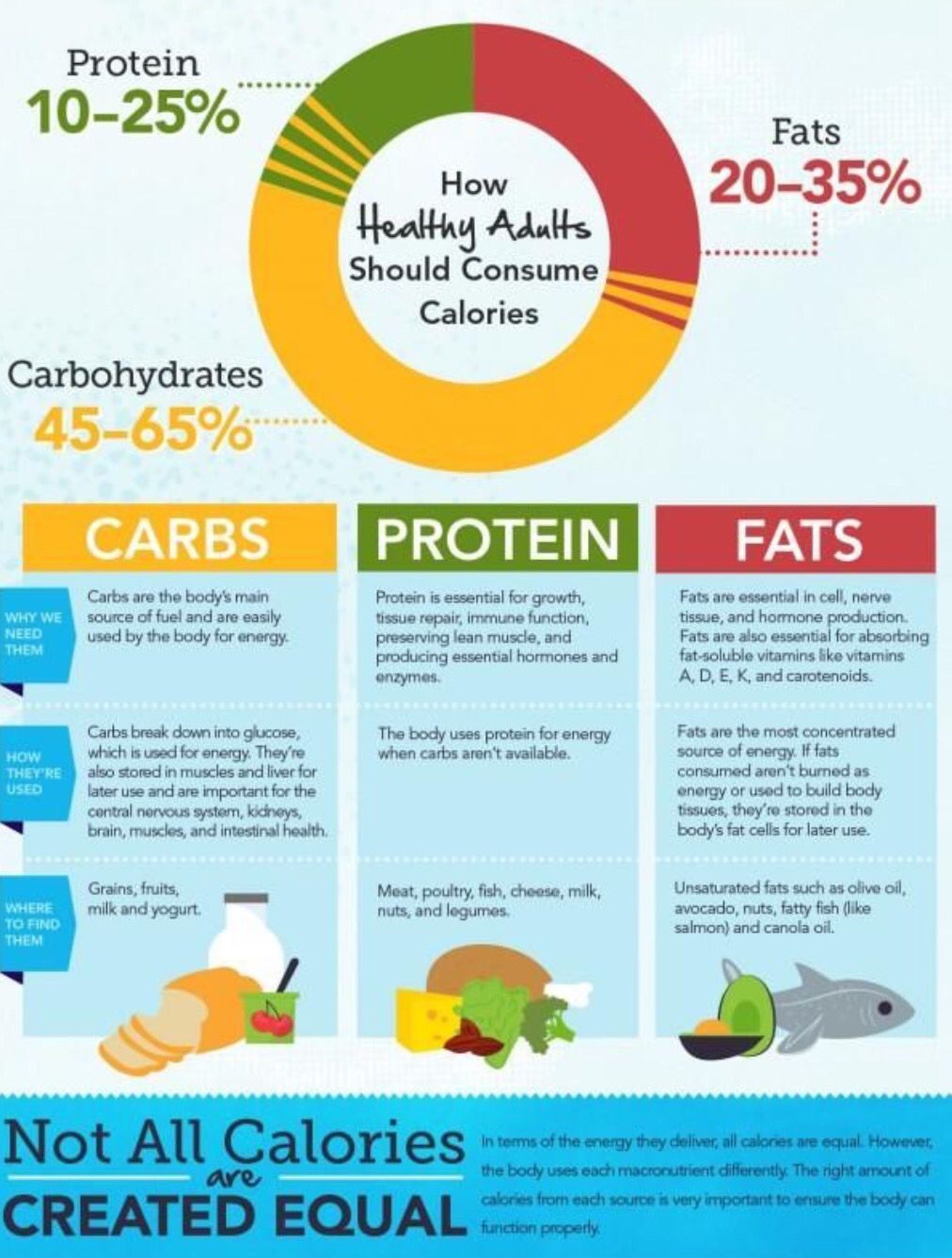
Macronutrient Balance
Regardless of your calorie goals, aim for a balanced intake of macronutrients:
- Proteins: Essential for muscle maintenance and growth
- Carbohydrates: Primary energy source for the body and brain
- Fats: Crucial for hormone production and nutrient absorption
The ideal ratio of these macronutrients can vary based on individual factors and goals. However, a general guideline is:
- Protein: 10-35% of total calories
- Carbohydrates: 45-65% of total calories
- Fats: 20-35% of total calories
Micronutrients: The Unsung Heroes
While macronutrients often take the spotlight in discussions about calorie needs, micronutrients (vitamins and minerals) are equally important for overall health and optimal body function. A diet rich in fruits, vegetables, whole grains, and lean proteins helps ensure adequate micronutrient intake.
The Role of Exercise in Calorie Burn
Physical activity plays a crucial role in your daily calorie burn. Not only does it increase your TDEE, but it also offers numerous health benefits beyond weight management. How does exercise impact your calorie burn?

Types of Exercise and Calorie Burn
Different types of exercise burn calories at different rates:
- Cardiovascular exercise: Generally burns more calories during the activity
- Strength training: May burn fewer calories during the session but can increase RMR over time
- High-Intensity Interval Training (HIIT): Can lead to increased calorie burn both during and after exercise
The key is to find a balance that suits your goals and preferences. A combination of cardio and strength training is often recommended for overall health and fitness.
Non-Exercise Activity Thermogenesis (NEAT)
NEAT refers to the calories burned through everyday activities that aren’t formal exercise. This can include walking, housework, fidgeting, and even standing instead of sitting. NEAT can significantly impact your total daily calorie burn and is an often-overlooked aspect of energy expenditure.
Increasing your NEAT can be an effective strategy for boosting calorie burn without dramatically altering your routine. Simple changes like taking the stairs instead of the elevator or having walking meetings can add up over time.

Monitoring and Adjusting Your Calorie Needs
Calculating your calorie needs is just the first step. To effectively manage your weight and health, it’s important to monitor your progress and make adjustments as needed. How can you do this effectively?
Tools for Tracking
Several tools can help you monitor your calorie intake and expenditure:
- Food diaries or apps: Help track calorie intake
- Fitness trackers: Estimate calorie burn from activities
- Regular weigh-ins: Provide data on weight trends
- Body measurements: Offer insight into body composition changes
Remember that these tools provide estimates, not exact figures. Use them as guides rather than strict rules.
The Importance of Flexibility
Your calorie needs aren’t static. They can change based on factors like:
- Age
- Changes in activity level
- Health status
- Hormonal fluctuations
Be prepared to adjust your calorie intake as needed. If you’re not seeing the results you expect, consider recalculating your needs or consulting with a healthcare professional or registered dietitian.

When to Seek Professional Guidance
While understanding and managing your calorie needs can be empowering, there are times when professional guidance is beneficial or necessary. When should you consider seeking help from a healthcare provider or registered dietitian?
Complex Health Conditions
If you have health conditions that affect your metabolism or nutritional needs, such as diabetes, thyroid disorders, or digestive issues, professional guidance can help you navigate your specific requirements.
Eating Disorders or Disordered Eating Patterns
If you have a history of eating disorders or find yourself developing unhealthy relationships with food or exercise, it’s crucial to seek professional help. Focusing too intensely on calorie counting can sometimes exacerbate these issues.
Plateau in Progress
If you’ve been consistently following a calorie plan but aren’t seeing the expected results, a professional can help identify potential issues and suggest adjustments.
Athletic Performance
Athletes or highly active individuals may have specific nutritional needs that go beyond basic calorie calculations. A sports nutritionist can provide tailored advice to support performance goals.

Remember, seeking help is a sign of strength, not weakness. Professional guidance can provide personalized strategies and support to help you achieve your health and fitness goals safely and effectively.
How Many Calories Do I Burn in a Day?
We include products we think are useful for our readers. If you buy through links on this page, we may earn a small commission Here’s our process.
Healthline only shows you brands and products that we stand behind.
Our team thoroughly researches and evaluates the recommendations we make on our site. To establish that the product manufacturers addressed safety and efficacy standards, we:
- Evaluate ingredients and composition: Do they have the potential to cause harm?
- Fact-check all health claims: Do they align with the current body of scientific evidence?
- Assess the brand: Does it operate with integrity and adhere to industry best practices?
We do the research so you can find trusted products for your health and wellness.
Read more about our vetting process.
Was this helpful?
The amount of calories that you burn each day depends on several factors, including your height, weight, and activity level. Determining your daily calorie needs can help you reach your health goals.
Determining your daily calorie needs can help you reach your health goals.
Every day, you burn calories when you move around, exercise, and go about your daily tasks.
Most female adults need 1,600–2,200 calories per day, while adult males need 2,200–3,000 calories per day. However, the amount of calories you need each day is unique to your body and activity levels (1).
Calories are important for basic bodily functions, such as:
- breathing
- circulating blood
- cell processes
You also burn additional calories from everyday movements, as well as exercise, which can vary considerably from person to person. If you’ve ever wondered how many calories you burn each day, the Mifflin-St Jeor formula can help you figure this out.
This formula calculates your resting metabolic rate (RMR), also known as your resting energy expenditure, which is the number of calories your body needs to function at rest.
With one more calculation, which considers your activity levels, you can work out how many calories you need each day to maintain your current weight.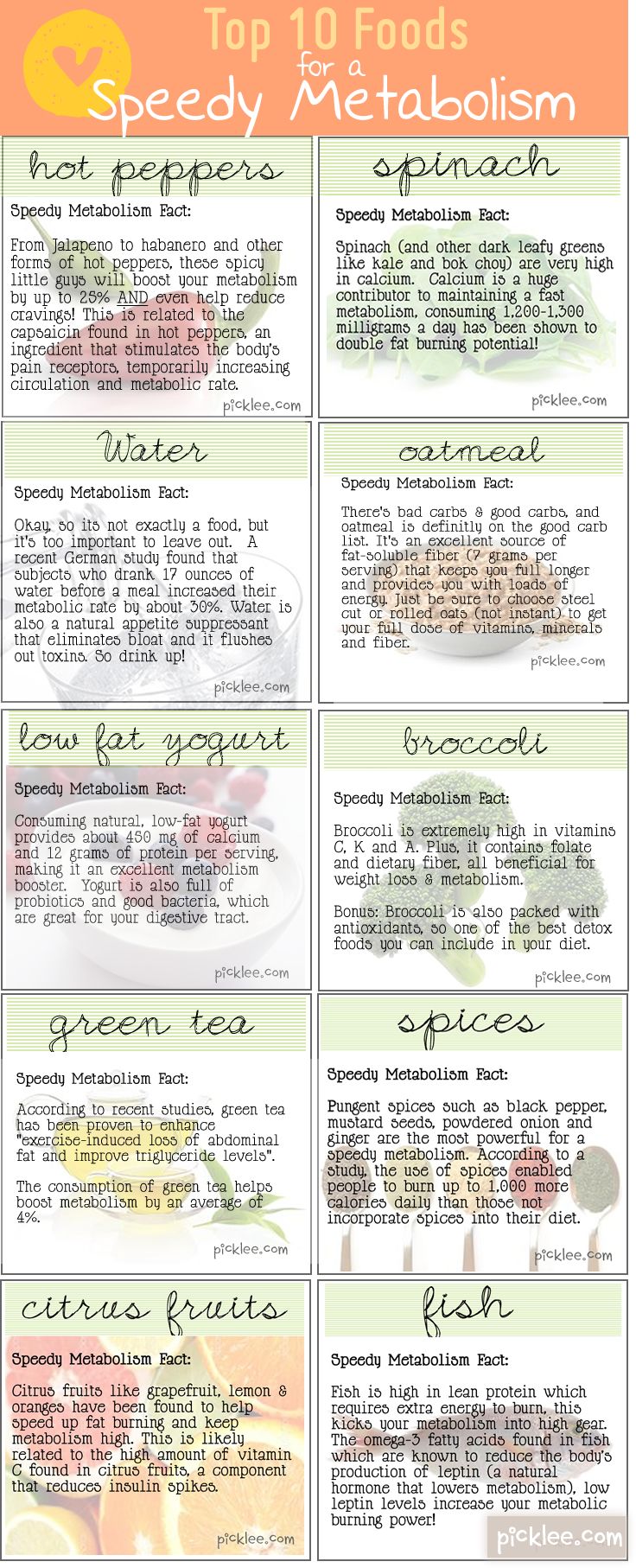 Eating fewer calories than this will likely result in weight loss, while eating more calories than this will likely lead to weight gain.
Eating fewer calories than this will likely result in weight loss, while eating more calories than this will likely lead to weight gain.
This article teaches you how to calculate your calorie needs based on your health goals.
The number of calories you should burn in a day largely depends on your personal health and fitness goals, as well as other factors like your age, sex, height, weight, and activity levels.
To lose weight
To lose weight, you must be in a calorie deficit. This means you’re either eating fewer calories than your body needs, burning additional calories, or a combination of both.
For sustainable weight loss, an ideal calorie deficit will be around 10–20% fewer calories than your total daily energy expenditure (TDEE).
Let’s say that your body needs 2,200 calories per day. A calorie deficit of 10–20% would be 1,760–1,980 calories per day (Equation: 2,200 – (2,200 × 0.1) = 1,980 or 2,200 – (2,200 × 0.2) = 1,760).
While you can achieve weight loss quicker with a larger calorie deficit, it may be difficult to sustain long term since it will likely lead to significant hunger. Your body may employ mechanisms to prevent further weight loss, such as sluggishness or a reduced metabolic rate (2, 3).
Your body may employ mechanisms to prevent further weight loss, such as sluggishness or a reduced metabolic rate (2, 3).
Furthermore, too large of a deficit can lead to loss of lean muscle. A mild calorie deficit paired with resistance training can help preserve lean muscle mass while also promoting fat loss (4, 5, 6).
That said, weight loss can be influenced by a variety of factors, such as age, genetics, hormones, medical conditions, and medications. Therefore, you may need to work with a healthcare professional who can develop personalized recommendations for you (7).
To maintain weight
If you’re looking to maintain your weight, you’ll want to ensure your calorie intake matches your calorie expenditure.
To figure this out, you’ll need to calculate your TDEE, which is the number of calories your body needs to sustain the weight you’re currently at.
If you notice that you’re gaining weight, this is likely a sign that you’re either consuming more calories or expending fewer calories than you intend to.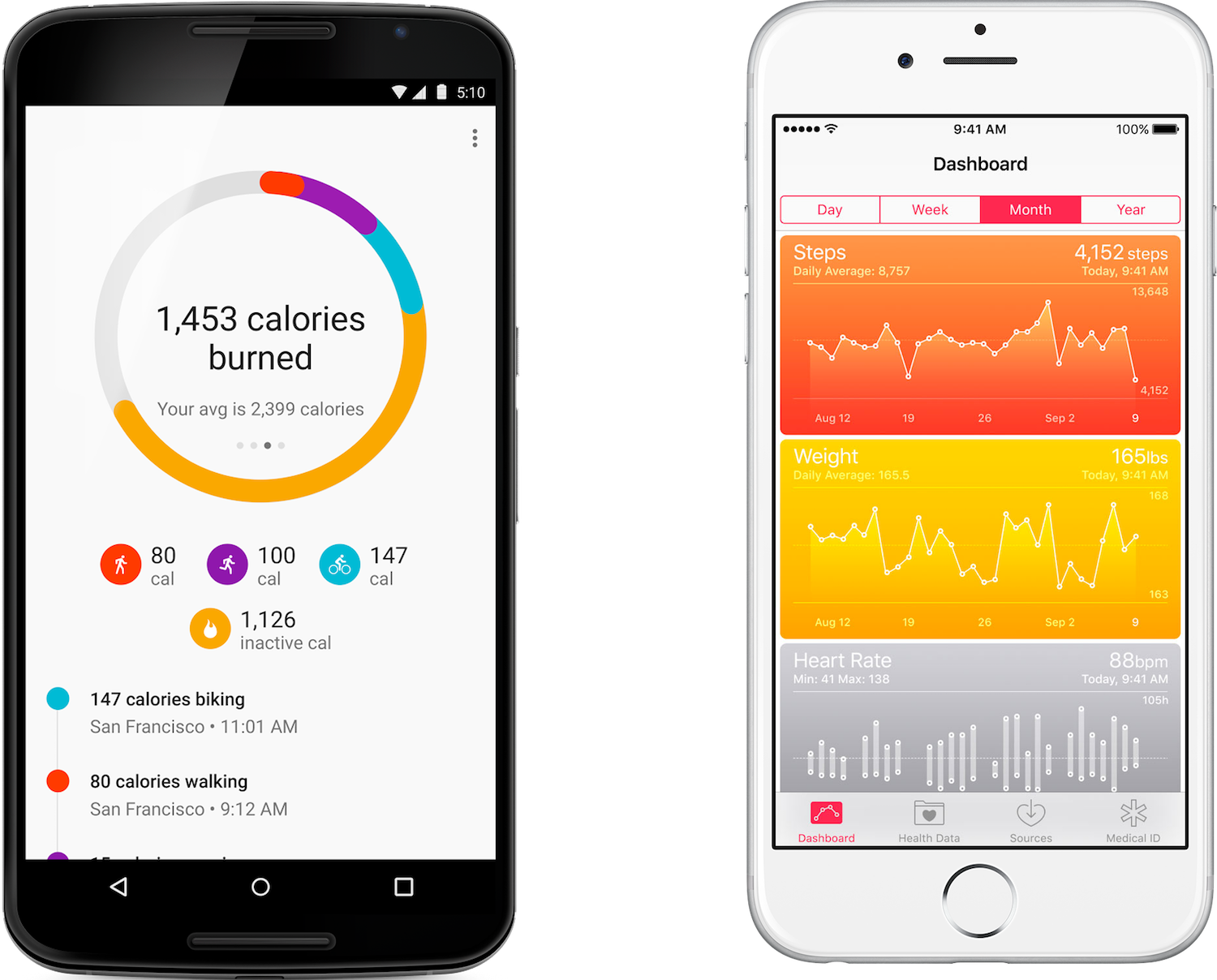 If you’re losing weight, you’re liking not eating enough calories or expending too many calories.
If you’re losing weight, you’re liking not eating enough calories or expending too many calories.
To gain weight
If you want to gain weight, you need to be in a calorie surplus. This means that you’re either eating more calories than your body needs, expending fewer calories, or a combination of both.
As in the case of a calorie deficit, you’ll want to do this slowly to ensure it’s healthy and sustainable. A mild calorie surplus of around 10–20% will allow for slow, gradual weight gain.
If your calorie needs are 2,200 calories per day, a calorie surplus of 10–20% would be 2,420–2,640 calories per day.
While it may seem obvious to eat a very large amount of calories and limit your physical activity, this strategy isn’t ideal, as it will likely lead to excessive fat accumulation and removes the important health benefits of exercise (8).
Ideally, choose nutrient-dense foods that are higher in calories to support gradual weight gain. Examples include:
- whole milk, yogurt, etc.

- protein shakes
- avocados
- nuts, seeds, and their oils
- rice and other whole grains
- salmon and other oily fish
- meal replacement drinks as a snack
If you struggle to eat large meals, you may want to eat smaller meals more frequently. You may also want to cut back on your physical activity if you’re extremely active. For example, you may wish to reduce the time, frequency, or intensity of your exercise.
In some cases, your healthcare professional may want you to gain weight quicker, so be sure to listen to their advice.
The Mifflin-St Jeor equation is an easy way to calculate how many calories you need to eat per day, and it’s considered one of the most accurate formulas. It’s adjusted based on your sex, age, height, and weight to give a personalized estimation (9).
This equation was first published in 1990 as an updated formula that better predicts a person’s energy expenditure than the previously used Harris-Benedict equation (10).
Once you calculate your resting metabolic rate (RMR), you can multiply this figure by an activity factor based on your daily activity level — ranging from sedentary to very active — to find out the number of calories you need to consume each day to maintain your weight.
The next sections will tell you how to do these calculations. If you’re looking for a quick answer, you can use our handy online calculator to do the legwork for you.
Step 1. Calculate RMR
Your RMR is the number of calories your body needs to function, and it does not include your daily physical activity and other movements. To calculate your RMR, use your sex, age, height, and weight to adjust the formula.
The formulas for calculating this number are as follows, using kilograms for weight, centimeters for height, and years for age (9).
For males, use the following equation:
- 9.99 × weight + 6.25 × height – 4.92 × age + 5 = RMR for males
For example, a 40-year-old, 180-pound (81. 6-kg), 6-foot (183-cm) tall man has a BMR of 1,767. This means that, at rest, he’ll burn approximately 1,769 calories in a day (Equation: (9.99 × 81.6 kg) + (6.25 × 183) – (4.92 × 40) + 5 = 1,767).
6-kg), 6-foot (183-cm) tall man has a BMR of 1,767. This means that, at rest, he’ll burn approximately 1,769 calories in a day (Equation: (9.99 × 81.6 kg) + (6.25 × 183) – (4.92 × 40) + 5 = 1,767).
For females, use the following equation:
- 9.99 × weight + 6.25 × height – 4.92 × age – 161= RMR for females
For example, a 40-year-old, 150-pound (68-kg), 5’6” (168-cm) woman has a RMR of 1,372 (Equation: (9.99 × 68 kg) + (6.25 × 168) – (4.92 × 40) – 161 = 1,372).
Keep in mind that this number calculates your RMR, or resting energy expenditure, which does not account for any movement throughout the day. You would not use this as the final number for your calorie needs.
Step 2. Work out your activity level
From there, you must figure out your activity level. The activity levels the equation uses are as follows (11):
- 1.2, or sedentary (little to no exercise)
- 1.375, or lightly active (light exercise 1–3 days per week)
- 1.
 55, or moderately active (moderate exercise 3–5 days per week)
55, or moderately active (moderate exercise 3–5 days per week) - 1.725, or very active (hard exercise 6–7 days per week)
- 1.9, or extra active (very hard exercise, training, or a physical job)
For example, a postal worker who walks all day for their job would have an activity level of 1.725depending on the length and difficulty of their route.
A desk worker who walks several times a week for exercise would have an activity level of 1.55.
Step 3. Use the full equation
Putting everything together, the Mifflin-St Jeor equation is as follows:
- RMR × activity level = calories needed to maintain weight
A 150-pound (68-kg) female who’s extra active will need 2,611 calories to maintain their weight (Equation: 1,372 (RMR) × 1.9 (activity level) = 2,607 calories).
A 180-pound (81.6-kg) male who’s moderately active will need 2,742 calories to maintain their weight (Equation: 1,767 (RMR) × 1. 55 (activity level) = 2,739 calories).
55 (activity level) = 2,739 calories).
As you can see in the above examples, a person’s activity level has a lot to do with how many calories they need each day.
Many people think they need to exercise hard to burn calories throughout the day.
While exercise does burn a lot of calories, your body also burns calories while you’re doing normal daily tasks. How much you burn has to do with how much you weigh.
For example, people will burn the following number of calories in 30 minutes of doing these tasks based on their weight (12):
| Task | 125-pound (56.7-kg) person | 155-pound (70.3) person | 185-pound (83.9-kg) person |
| walking at 4.5 mph | 150 | 186 | 222 |
| cleaning the gutters | 150 | 186 | 222 |
| mowing the lawn | 135 | 167 | 200 |
| gardening | 135 | 167 | 200 |
| washing the car | 135 | 167 | 200 |
| walking at 4 mph | 135 | 167 | 200 |
walking at 3. 5 mph 5 mph | 120 | 149 | 178 |
| playing with the kids (moderate activity) | 120 | 149 | 178 |
| grocery shopping (with cart) | 105 | 130 | 155 |
| cooking | 75 | 93 | 111 |
| sitting in meetings | 49 | 60 | 72 |
| light office work | 45 | 56 | 67 |
| computer work | 41 | 51 | 61 |
| standing in line | 38 | 47 | 56 |
| reading | 34 | 42 | 50 |
| watching television | 23 | 28 | 33 |
| sleeping | 19 | 23 | 28 |
Note that your exercise habits affect how many calories you burn at rest. While aerobic activity may burn more calories during the training session, researchers have found that resistance exercise increases resting metabolic rate for up to 14 hours after exercising (13, 14).
You can use an interactive online calculator to find out how many calories you’ll burn while doing different activities. To use it, simply input your activity, the time spent doing it, and your weight.
Yes, males and females burn calories at different rates. This is why sex is included as a variable in the equation, along with age and weight, which also affect the number of calories a person burns.
People assigned male at birth generally have less body fat than people assigned female at birth. They also tend to have more muscle mass. More muscle means the body burns a higher number of calories while at rest.
So, generally, males usually burn more calories than females overall. That said, a person’s body composition plays an important role, as do hormone levels.
Losing weight isn’t always as simple as plugging numbers into a calculator.
The most effective way to lose weight and keep it off in the long term is to follow a balanced lifestyle that includes:
- following a well-balanced diet
- engaging in regular exercise
- getting adequate quality sleep
- effectively managing your stress levels
Some people also find these tips can help when they’re trying to lose weight:
- reading labels to learn the nutritional facts about the foods you eat
- keeping a food diary to see what you eat in a day and identify areas for improvement
- choosing lower calorie options when choosing foods, such as skim milk instead of whole milk, air-popped popcorn instead of chips, and thin crust pizza instead of thick crust
- reducing processed, high calorie, nutrient-poor foods like candy, cookies, and chips
- being mindful of portion sizes to avoid overeating
- putting food on a plate rather than eating it straight from the bag
- using smaller plates and bowls
- eating slowly and chewing food thoroughly
- waiting at least 20 minutes before going back for seconds
- making small, sustainable changes instead of favoring a crash diet
- wear a fitness tracker or smartwatch to monitor your activity levels
Shop for food diaries to help get you started.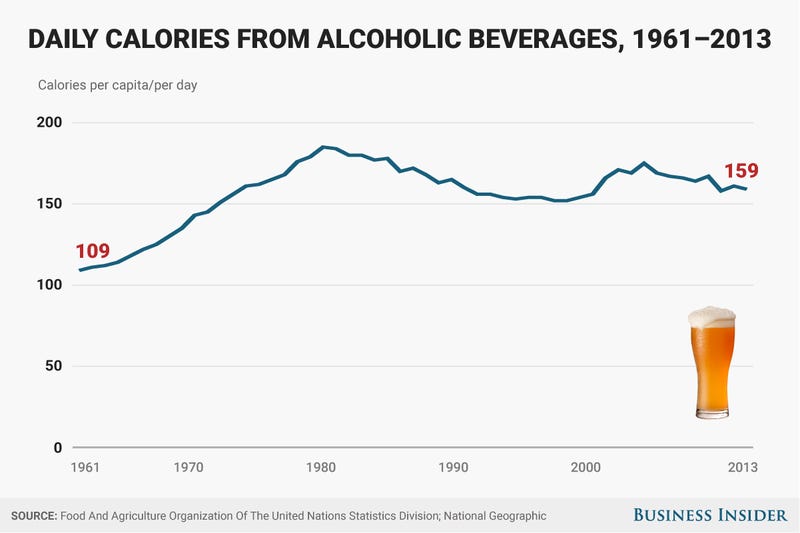
And check out the best calorie counter websites and apps here.
If you’re struggling to gain or lose weight, you may want to see a healthcare professional who can provide personal recommendations.
Lose weight
If you aren’t losing weight despite increasing your physical activity and decreasing your food intake, you may want to visit your primary care professional.
They can assess your current lifestyle habits, medications you’re taking, any medical conditions, family history, and other factors that may be preventing you from losing weight.
You may also be referred to other specialists, such as a registered dietitian, who can provide a detailed assessment of your diet and give personalized suggestions to help you achieve weight loss based on your unique situation.
If an underlying hormonal condition is suspected, such as hypothyroidism, they may refer you to an endocrinologist.
Gain weight
If you can’t put on weight or are losing weight unintentionally, it’s important that you speak with your primary care professional as soon as possible. In some cases, this could be a sign of an underlying condition like hyperthyroidism or cancer.
In some cases, this could be a sign of an underlying condition like hyperthyroidism or cancer.
They may also refer you to a registered dietitian who can assess your diet and provide suggestions to increase your calorie intake in a healthy way, or a physical therapist who can help you build muscle.
The amount of calories you need each day is unique to your body, lifestyle habits, and health goals.
While the average male and female need roughly 2,200–3,000 and 1,600–2,200 calories per day, respectively, your needs may differ depending on your height, weight, and activity level.
Learning how to calculate your individual calorie needs is a good way to know whether you’re on track with your health and fitness goals, such as losing, maintaining, or gaining weight.
That said, if you’re looking for personalized recommendations or struggling to achieve specific health goals, talk with a healthcare professional who can give a more thorough assessment.
How Many Calories Do I Burn in a Day?
We include products we think are useful for our readers. If you buy through links on this page, we may earn a small commission Here’s our process.
If you buy through links on this page, we may earn a small commission Here’s our process.
Healthline only shows you brands and products that we stand behind.
Our team thoroughly researches and evaluates the recommendations we make on our site. To establish that the product manufacturers addressed safety and efficacy standards, we:
- Evaluate ingredients and composition: Do they have the potential to cause harm?
- Fact-check all health claims: Do they align with the current body of scientific evidence?
- Assess the brand: Does it operate with integrity and adhere to industry best practices?
We do the research so you can find trusted products for your health and wellness.
Read more about our vetting process.
Was this helpful?
The amount of calories that you burn each day depends on several factors, including your height, weight, and activity level. Determining your daily calorie needs can help you reach your health goals.
Every day, you burn calories when you move around, exercise, and go about your daily tasks.
Most female adults need 1,600–2,200 calories per day, while adult males need 2,200–3,000 calories per day. However, the amount of calories you need each day is unique to your body and activity levels (1).
Calories are important for basic bodily functions, such as:
- breathing
- circulating blood
- cell processes
You also burn additional calories from everyday movements, as well as exercise, which can vary considerably from person to person. If you’ve ever wondered how many calories you burn each day, the Mifflin-St Jeor formula can help you figure this out.
This formula calculates your resting metabolic rate (RMR), also known as your resting energy expenditure, which is the number of calories your body needs to function at rest.
With one more calculation, which considers your activity levels, you can work out how many calories you need each day to maintain your current weight.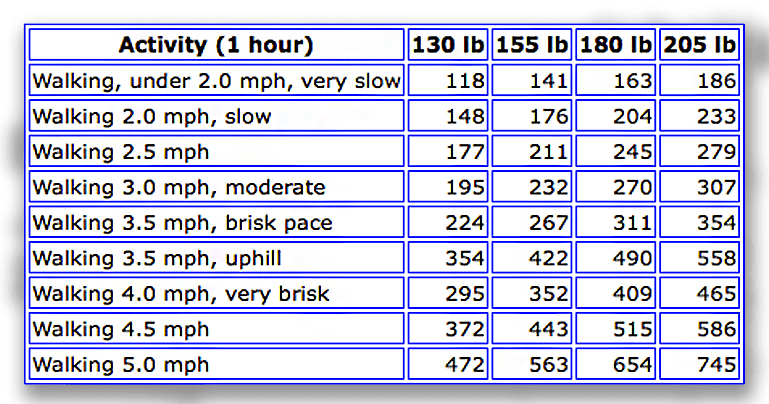 Eating fewer calories than this will likely result in weight loss, while eating more calories than this will likely lead to weight gain.
Eating fewer calories than this will likely result in weight loss, while eating more calories than this will likely lead to weight gain.
This article teaches you how to calculate your calorie needs based on your health goals.
The number of calories you should burn in a day largely depends on your personal health and fitness goals, as well as other factors like your age, sex, height, weight, and activity levels.
To lose weight
To lose weight, you must be in a calorie deficit. This means you’re either eating fewer calories than your body needs, burning additional calories, or a combination of both.
For sustainable weight loss, an ideal calorie deficit will be around 10–20% fewer calories than your total daily energy expenditure (TDEE).
Let’s say that your body needs 2,200 calories per day. A calorie deficit of 10–20% would be 1,760–1,980 calories per day (Equation: 2,200 – (2,200 × 0.1) = 1,980 or 2,200 – (2,200 × 0.2) = 1,760).
While you can achieve weight loss quicker with a larger calorie deficit, it may be difficult to sustain long term since it will likely lead to significant hunger. Your body may employ mechanisms to prevent further weight loss, such as sluggishness or a reduced metabolic rate (2, 3).
Your body may employ mechanisms to prevent further weight loss, such as sluggishness or a reduced metabolic rate (2, 3).
Furthermore, too large of a deficit can lead to loss of lean muscle. A mild calorie deficit paired with resistance training can help preserve lean muscle mass while also promoting fat loss (4, 5, 6).
That said, weight loss can be influenced by a variety of factors, such as age, genetics, hormones, medical conditions, and medications. Therefore, you may need to work with a healthcare professional who can develop personalized recommendations for you (7).
To maintain weight
If you’re looking to maintain your weight, you’ll want to ensure your calorie intake matches your calorie expenditure.
To figure this out, you’ll need to calculate your TDEE, which is the number of calories your body needs to sustain the weight you’re currently at.
If you notice that you’re gaining weight, this is likely a sign that you’re either consuming more calories or expending fewer calories than you intend to.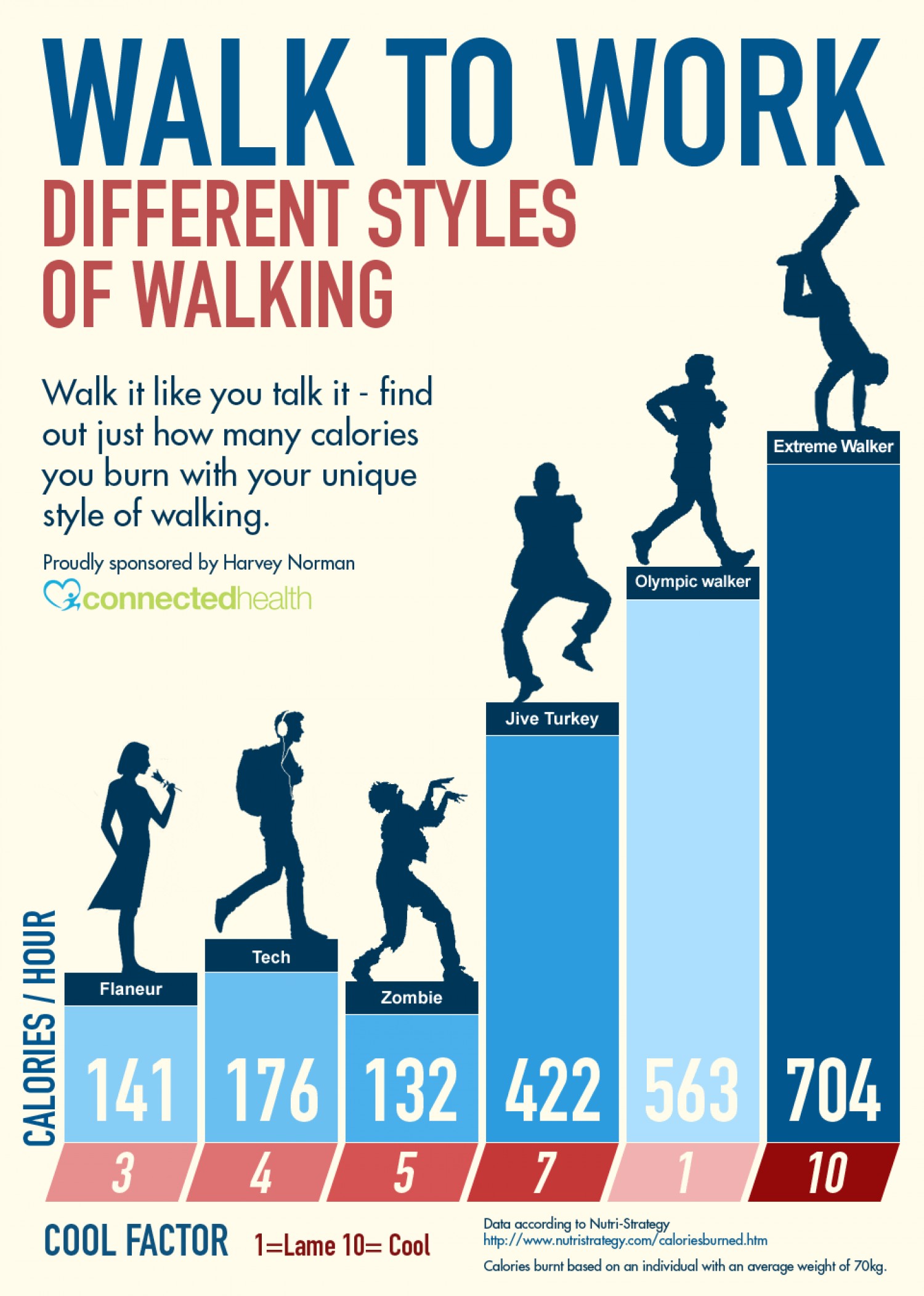 If you’re losing weight, you’re liking not eating enough calories or expending too many calories.
If you’re losing weight, you’re liking not eating enough calories or expending too many calories.
To gain weight
If you want to gain weight, you need to be in a calorie surplus. This means that you’re either eating more calories than your body needs, expending fewer calories, or a combination of both.
As in the case of a calorie deficit, you’ll want to do this slowly to ensure it’s healthy and sustainable. A mild calorie surplus of around 10–20% will allow for slow, gradual weight gain.
If your calorie needs are 2,200 calories per day, a calorie surplus of 10–20% would be 2,420–2,640 calories per day.
While it may seem obvious to eat a very large amount of calories and limit your physical activity, this strategy isn’t ideal, as it will likely lead to excessive fat accumulation and removes the important health benefits of exercise (8).
Ideally, choose nutrient-dense foods that are higher in calories to support gradual weight gain. Examples include:
- whole milk, yogurt, etc.

- protein shakes
- avocados
- nuts, seeds, and their oils
- rice and other whole grains
- salmon and other oily fish
- meal replacement drinks as a snack
If you struggle to eat large meals, you may want to eat smaller meals more frequently. You may also want to cut back on your physical activity if you’re extremely active. For example, you may wish to reduce the time, frequency, or intensity of your exercise.
In some cases, your healthcare professional may want you to gain weight quicker, so be sure to listen to their advice.
The Mifflin-St Jeor equation is an easy way to calculate how many calories you need to eat per day, and it’s considered one of the most accurate formulas. It’s adjusted based on your sex, age, height, and weight to give a personalized estimation (9).
This equation was first published in 1990 as an updated formula that better predicts a person’s energy expenditure than the previously used Harris-Benedict equation (10).
Once you calculate your resting metabolic rate (RMR), you can multiply this figure by an activity factor based on your daily activity level — ranging from sedentary to very active — to find out the number of calories you need to consume each day to maintain your weight.
The next sections will tell you how to do these calculations. If you’re looking for a quick answer, you can use our handy online calculator to do the legwork for you.
Step 1. Calculate RMR
Your RMR is the number of calories your body needs to function, and it does not include your daily physical activity and other movements. To calculate your RMR, use your sex, age, height, and weight to adjust the formula.
The formulas for calculating this number are as follows, using kilograms for weight, centimeters for height, and years for age (9).
For males, use the following equation:
- 9.99 × weight + 6.25 × height – 4.92 × age + 5 = RMR for males
For example, a 40-year-old, 180-pound (81. 6-kg), 6-foot (183-cm) tall man has a BMR of 1,767. This means that, at rest, he’ll burn approximately 1,769 calories in a day (Equation: (9.99 × 81.6 kg) + (6.25 × 183) – (4.92 × 40) + 5 = 1,767).
6-kg), 6-foot (183-cm) tall man has a BMR of 1,767. This means that, at rest, he’ll burn approximately 1,769 calories in a day (Equation: (9.99 × 81.6 kg) + (6.25 × 183) – (4.92 × 40) + 5 = 1,767).
For females, use the following equation:
- 9.99 × weight + 6.25 × height – 4.92 × age – 161= RMR for females
For example, a 40-year-old, 150-pound (68-kg), 5’6” (168-cm) woman has a RMR of 1,372 (Equation: (9.99 × 68 kg) + (6.25 × 168) – (4.92 × 40) – 161 = 1,372).
Keep in mind that this number calculates your RMR, or resting energy expenditure, which does not account for any movement throughout the day. You would not use this as the final number for your calorie needs.
Step 2. Work out your activity level
From there, you must figure out your activity level. The activity levels the equation uses are as follows (11):
- 1.2, or sedentary (little to no exercise)
- 1.375, or lightly active (light exercise 1–3 days per week)
- 1.
 55, or moderately active (moderate exercise 3–5 days per week)
55, or moderately active (moderate exercise 3–5 days per week) - 1.725, or very active (hard exercise 6–7 days per week)
- 1.9, or extra active (very hard exercise, training, or a physical job)
For example, a postal worker who walks all day for their job would have an activity level of 1.725depending on the length and difficulty of their route.
A desk worker who walks several times a week for exercise would have an activity level of 1.55.
Step 3. Use the full equation
Putting everything together, the Mifflin-St Jeor equation is as follows:
- RMR × activity level = calories needed to maintain weight
A 150-pound (68-kg) female who’s extra active will need 2,611 calories to maintain their weight (Equation: 1,372 (RMR) × 1.9 (activity level) = 2,607 calories).
A 180-pound (81.6-kg) male who’s moderately active will need 2,742 calories to maintain their weight (Equation: 1,767 (RMR) × 1. 55 (activity level) = 2,739 calories).
55 (activity level) = 2,739 calories).
As you can see in the above examples, a person’s activity level has a lot to do with how many calories they need each day.
Many people think they need to exercise hard to burn calories throughout the day.
While exercise does burn a lot of calories, your body also burns calories while you’re doing normal daily tasks. How much you burn has to do with how much you weigh.
For example, people will burn the following number of calories in 30 minutes of doing these tasks based on their weight (12):
| Task | 125-pound (56.7-kg) person | 155-pound (70.3) person | 185-pound (83.9-kg) person |
| walking at 4.5 mph | 150 | 186 | 222 |
| cleaning the gutters | 150 | 186 | 222 |
| mowing the lawn | 135 | 167 | 200 |
| gardening | 135 | 167 | 200 |
| washing the car | 135 | 167 | 200 |
| walking at 4 mph | 135 | 167 | 200 |
walking at 3. 5 mph 5 mph | 120 | 149 | 178 |
| playing with the kids (moderate activity) | 120 | 149 | 178 |
| grocery shopping (with cart) | 105 | 130 | 155 |
| cooking | 75 | 93 | 111 |
| sitting in meetings | 49 | 60 | 72 |
| light office work | 45 | 56 | 67 |
| computer work | 41 | 51 | 61 |
| standing in line | 38 | 47 | 56 |
| reading | 34 | 42 | 50 |
| watching television | 23 | 28 | 33 |
| sleeping | 19 | 23 | 28 |
Note that your exercise habits affect how many calories you burn at rest. While aerobic activity may burn more calories during the training session, researchers have found that resistance exercise increases resting metabolic rate for up to 14 hours after exercising (13, 14).
You can use an interactive online calculator to find out how many calories you’ll burn while doing different activities. To use it, simply input your activity, the time spent doing it, and your weight.
Yes, males and females burn calories at different rates. This is why sex is included as a variable in the equation, along with age and weight, which also affect the number of calories a person burns.
People assigned male at birth generally have less body fat than people assigned female at birth. They also tend to have more muscle mass. More muscle means the body burns a higher number of calories while at rest.
So, generally, males usually burn more calories than females overall. That said, a person’s body composition plays an important role, as do hormone levels.
Losing weight isn’t always as simple as plugging numbers into a calculator.
The most effective way to lose weight and keep it off in the long term is to follow a balanced lifestyle that includes:
- following a well-balanced diet
- engaging in regular exercise
- getting adequate quality sleep
- effectively managing your stress levels
Some people also find these tips can help when they’re trying to lose weight:
- reading labels to learn the nutritional facts about the foods you eat
- keeping a food diary to see what you eat in a day and identify areas for improvement
- choosing lower calorie options when choosing foods, such as skim milk instead of whole milk, air-popped popcorn instead of chips, and thin crust pizza instead of thick crust
- reducing processed, high calorie, nutrient-poor foods like candy, cookies, and chips
- being mindful of portion sizes to avoid overeating
- putting food on a plate rather than eating it straight from the bag
- using smaller plates and bowls
- eating slowly and chewing food thoroughly
- waiting at least 20 minutes before going back for seconds
- making small, sustainable changes instead of favoring a crash diet
- wear a fitness tracker or smartwatch to monitor your activity levels
Shop for food diaries to help get you started.
And check out the best calorie counter websites and apps here.
If you’re struggling to gain or lose weight, you may want to see a healthcare professional who can provide personal recommendations.
Lose weight
If you aren’t losing weight despite increasing your physical activity and decreasing your food intake, you may want to visit your primary care professional.
They can assess your current lifestyle habits, medications you’re taking, any medical conditions, family history, and other factors that may be preventing you from losing weight.
You may also be referred to other specialists, such as a registered dietitian, who can provide a detailed assessment of your diet and give personalized suggestions to help you achieve weight loss based on your unique situation.
If an underlying hormonal condition is suspected, such as hypothyroidism, they may refer you to an endocrinologist.
Gain weight
If you can’t put on weight or are losing weight unintentionally, it’s important that you speak with your primary care professional as soon as possible. In some cases, this could be a sign of an underlying condition like hyperthyroidism or cancer.
In some cases, this could be a sign of an underlying condition like hyperthyroidism or cancer.
They may also refer you to a registered dietitian who can assess your diet and provide suggestions to increase your calorie intake in a healthy way, or a physical therapist who can help you build muscle.
The amount of calories you need each day is unique to your body, lifestyle habits, and health goals.
While the average male and female need roughly 2,200–3,000 and 1,600–2,200 calories per day, respectively, your needs may differ depending on your height, weight, and activity level.
Learning how to calculate your individual calorie needs is a good way to know whether you’re on track with your health and fitness goals, such as losing, maintaining, or gaining weight.
That said, if you’re looking for personalized recommendations or struggling to achieve specific health goals, talk with a healthcare professional who can give a more thorough assessment.
How many calories do we actually burn during exercise
Sports and fitness
August 13, 2015
The number of calories we burn during physical activity depends on a lot of factors, so the number on the treadmill is something like the average temperature in the hospital.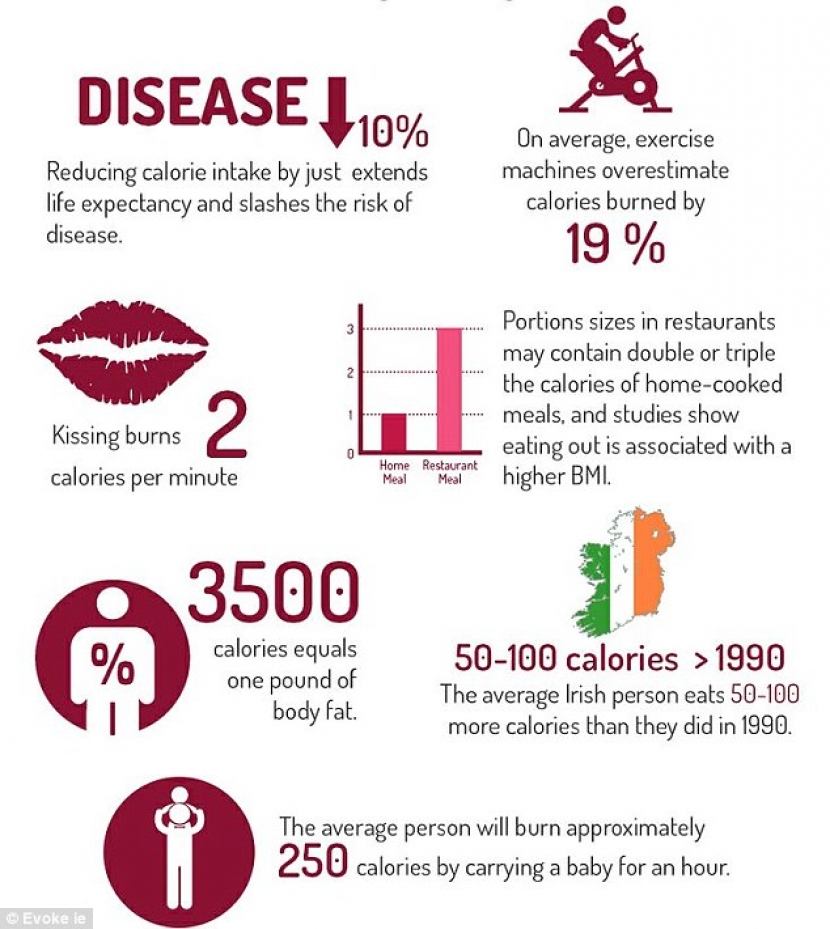 Today we will look at what factors, besides weight, height, gender and age, affect the number of calories we burn, how to speed up this process, and also look at tables with the average value of calories burned during functional training, yoga or weight lifting .
Today we will look at what factors, besides weight, height, gender and age, affect the number of calories we burn, how to speed up this process, and also look at tables with the average value of calories burned during functional training, yoga or weight lifting .
The computer in the treadmill, elliptical, or stepper only asks for your age, height, and weight, and then gives you the average. Much more information is needed to understand how many calories you actually burn.
The treadmill cannot measure your body temperature, nor does it take into account environmental conditions such as air temperature, humidity, and the presence or absence of precipitation.
The number of calories you burn is affected by your muscle mass, body fat percentage, fitness level, metabolic rate, body temperature, ambient temperature, relative humidity, presence or absence of precipitation, barometric pressure, altitude, during running – your “sail” and the direction of the wind, sleep patterns and even your diet.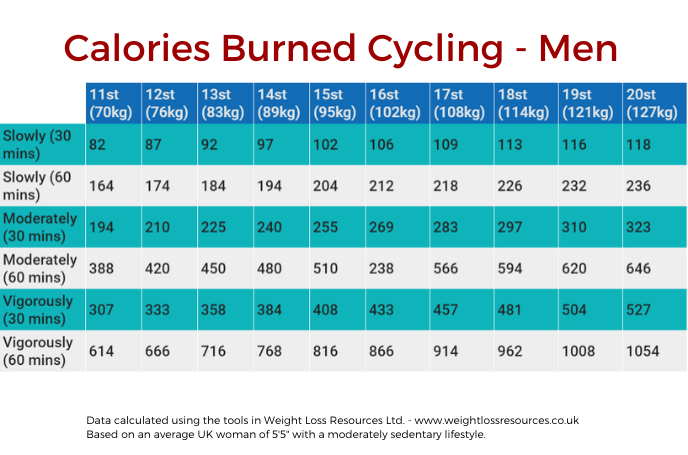
For example, T is temperature, V is humidity. The combination of high T and high B is very difficult; high T and low B – already easier; high B and low T are normal conditions; low T and high B – very cold; low T and low B – heat transfer is above average.
Breathing
With increased physical activity, the pulse rate increases, breathing becomes intermittent and frequent. This is because the heart is trying to pump as much oxygen as possible for the muscles to produce ATP (adenosine triphosphate). It is she who is the fuel for our body during training.
Adenosine triphosphate (abbr. ATP, English ATP) – nucleoside triphosphate, plays an extremely important role in the metabolism of energy and substances in organisms; First of all, the compound is known as a universal source of energy for all biochemical processes occurring in living systems.
ATP was discovered in 1929 by a group of Harvard Medical School scientists – Karl Loman, Cyrus Fiske and Yellapragada Subbarao, and in 1941 Fritz Lipmann showed that ATP is the main energy carrier in the cell.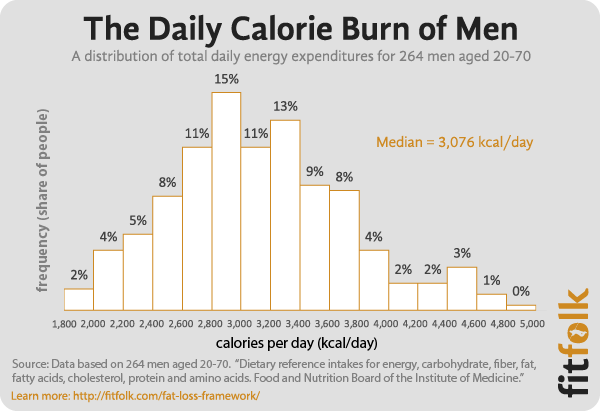
The main role of ATP in the body is associated with providing energy for numerous biochemical reactions. Being the carrier of two high-energy bonds, ATP serves as a direct source of energy for many energy-consuming biochemical and physiological processes. All these are reactions of the synthesis of complex substances in the body: the implementation of the active transfer of molecules through biological membranes, including for the creation of a transmembrane electrical potential; implementation of muscle contraction.
It turns out that during such intense training, for every liter of oxygen that you inhale, 5 kcal is burned. Thus, if we compare two people with approximately the same physical parameters who perform the same exercises, the one who breathes more often will burn more calories.
It also means that the less prepared you are, the harder your training will be and the more frequent your heart rate and breathing will be. This means that you will burn more calories than a more prepared person. If you want to burn more calories – breathe more often!
If you want to burn more calories – breathe more often!
Tables
There are special sports applications for running and cycling, which, together with additional gadgets (heart rate monitor and sports watch), more or less accurately calculate the number of calories spent during training. For example, Garmin watches such as the Fenix 3 and Forerunner 920XT theoretically take into account the ambient temperature, while the Strava app takes into account the weight of the bike.
But for other activities—yoga, Pilates, step aerobics, functional training, weight lifting, and so on—it is much more difficult to get even average data. For this, special tables are compiled that will give you only a general idea of the number of calories burned. But it’s better than nothing. We offer you data for the main types of training.
- Aerobics – 5.2 kcal per hour per 1 kg of body weight.
- Fast dancing – 7.4 kcal per hour per 1 kg of body weight.
- Football – 4.
 4 kcal per hour per 1 kg of weight.
4 kcal per hour per 1 kg of weight. - Volleyball – 4.8 kcal per hour per 1 kg of weight.
- Jumping rope – 5.6 kcal per hour per 1 kg of weight.
- Classes on the elliptical trainer – 7.4 kcal per hour per 1 kg of weight.
- Climbing stairs / step – 7.4 kcal per hour per 1 kg of weight.
- Stretching – 1.8 kcal per hour per 1 kg of weight.
- Weight training – 3.8 kcal per hour per 1 kg of weight.
- Ashtanga yoga – 6 kcal per hour per 1 kg of body weight.
- Static yoga – 3.2 kcal per hour per 1 kg of body weight.
- Exercise cycle – 4.4 kcal per hour per 1 kg of weight.
- Light step aerobics – 7.4 kcal per hour per 1 kg of weight.
- Intensive step aerobics — 10.6 kcal per hour per 1 kg of body weight.
- Exercise bike (medium load) – 7.4 kcal per hour per 1 kg of weight.
- Exercise bike (intensive exercise) – 11.1 kcal per hour per 1 kg of weight.
- Rowing machine – 7.4 kcal per hour per 1 kg of weight.

- Intensive weight lifting – 6 kcal per hour per 1 kg of body weight.
Calculator for calculating calories burned during strength training.
Swimming is a different story, because the watch does not take into account the number of calories that the body spends on heating, because the water temperature is always lower than body temperature.
Swimmers typically expend four times as much energy as athletes. Swimming at a speed of 400 mph burns 3 kcal per 1 kg of your body weight per hour, slow breaststroke – 6 kcal, slow crawl – 7 kcal, fast crawl – 8 kcal.
You can calculate the approximate number of calories burned during your swimming session manually and compare with the values that the application will give you based on the data received from your watch.
What is the Cooper Test
If you are interested in what methods athletes use, we suggest you try to calculate your fitness level using the Cooper test.
Cooper test is the common name for a series of tests for the physical fitness of the human body, created by the American doctor Kenneth Cooper in 1968 for the US Army.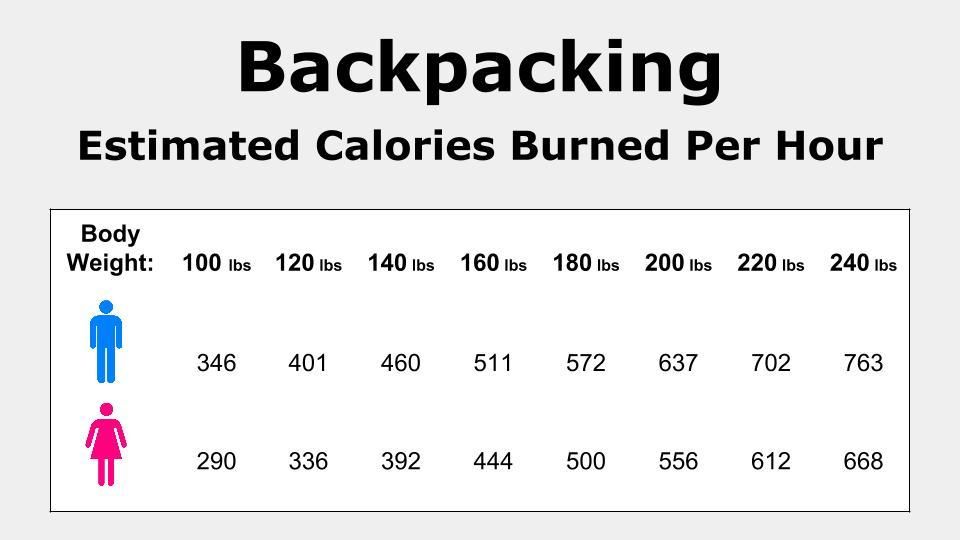 The most well-known variation is the 12-minute run: the distance traveled is recorded, and based on these data, conclusions are drawn for sports or medical purposes. Kenneth Cooper created more than 30 such tests, but this one is widely used in professional sports, such as football. When performing the test, 2/3 of the muscle mass is involved. Considering that the world record for the 5,000m run is 12:37.35 by Kenenisa Bekele, he would have covered about 4,800m in a 12-minute run.
The most well-known variation is the 12-minute run: the distance traveled is recorded, and based on these data, conclusions are drawn for sports or medical purposes. Kenneth Cooper created more than 30 such tests, but this one is widely used in professional sports, such as football. When performing the test, 2/3 of the muscle mass is involved. Considering that the world record for the 5,000m run is 12:37.35 by Kenenisa Bekele, he would have covered about 4,800m in a 12-minute run.
Running can be replaced by cycling or swimming for 12 minutes.
Read also 🧐
- 20 ways to eat fewer calories without straining
- How many calories can you burn during sex
- How to calculate the calorie intake
How many calories do we spend on training? | Flacon
A lot of clients show me their results from training – who burned how many calories, and I’m not in a hurry to praise them.
There is one BUT. Today about this.
How many calories do you think we spend in training?
I’m sure for some, the information from this post will be a kind of cold shower.
Contrary to popular belief, the average person (not an athlete!) spends most of the calories not in the gym, but in the process of normal life and solving everyday worries.
Our body has 3 items of energy expenditure:
1. Basic metabolism – the work of all organs and systems, energy maintenance of muscle, bone, adipose tissue. It takes about 60-70% of the total calorie consumption per day.
2. Thermic effect of food, or TEF , is the energy used to digest, absorb and store nutrients from food. On average, 10%.
3. Activity expenses , which in turn is subdivided into:
- training itself;
- daily activities: going to work, cleaning, walking the dog, scratching the back of the head and ear, etc.
All this takes about 15-30% of the total daily calorie intake.
Now for the shock content.
Only for work:
- the heart and kidneys spend about 130 kcal per day;
- the brain “takes” 335 kcal;
- liver – 360 kcal;
- about 13 kcal goes to maintain 1 kg of muscle and 4.5 kcal to maintain 1 kg of fat.
A simple calculation of the cost of the work of the five most “gluttonous” organs shows what is spent: 130\+130\+335\+360=955 kcal.
And this is without taking into account the energy that is used to maintain other organs, bone tissue, as well as muscles and fat. That is, you need to add another significant “piece” of calories. This will be the base exchange.
For example, the basic exchange of a young girl weighing 80 kg and 170 cm tall takes about 1580 kcal. Quite miniature, weighing 50 kg and 160 cm tall, – about 1200 kcal.
Now about training.
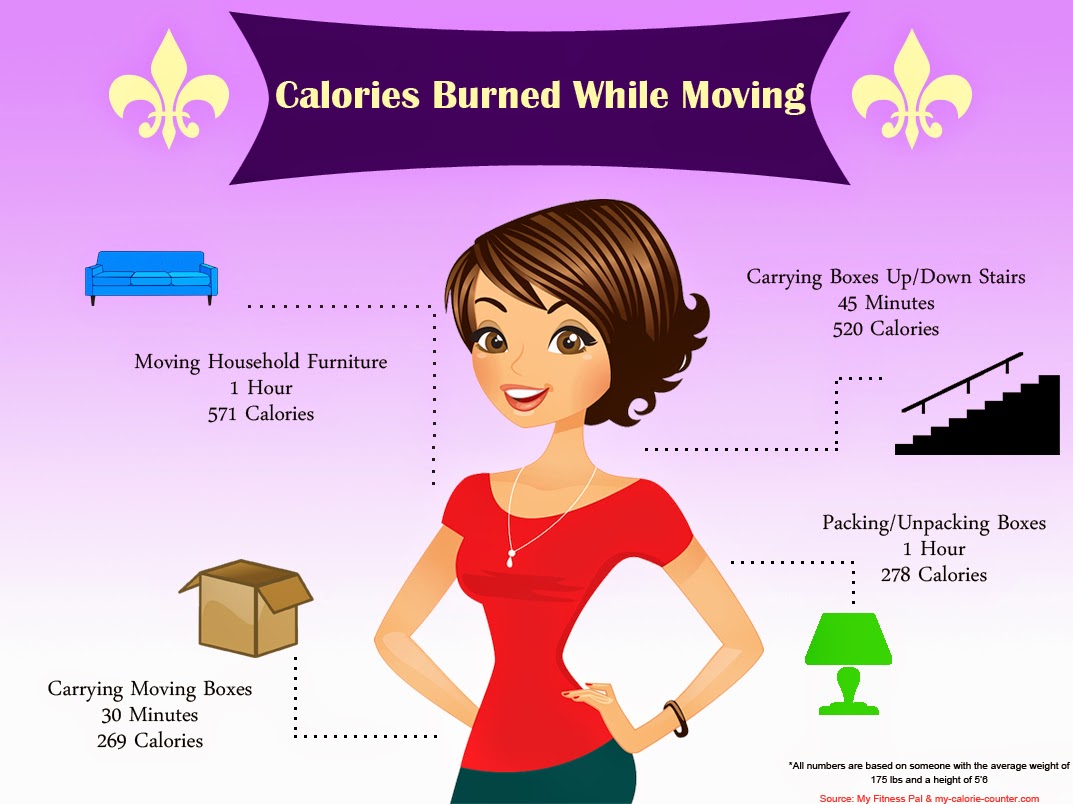.jpg)
If we are not talking about professional athletes (they work out really regularly, for a long time and hard, respectively, they can burn a lot of calories), but about an average person who goes to the gym 3 times a week and trains not very hard (and such most), you should not count on burning a large number of calories.
For example, a girl weighing 80 kg will burn:
about 480 kcal for 1 hour of running at a slow pace;
- the same amount for an hour of intensive strength training;
- 360 kcal for 40 minutes of cycling at a slow pace.
And now let’s compare with the cost of basic metabolism:
1580 kcal and 480 kcal, and even then – only on the day of training.
She will spend 11,060 kcal per week on the basic exchange, and 1,440 kcal in total for 3 workouts.
Agree, the contribution to the total energy costs is very modest.
Well, if we take a smaller girl from the example above, then her “spending” will be:
- 300 kcal per hour of running at a slow pace / hour of intense strength training;
- 265 kcal for 40 minutes of non-intensive cycle.
I hope you understand what I’m getting at?
There is a popular expression in Western countries: “You can’t outrun a bad diet.” To paraphrase a little, this can be translated as: “You can’t outrun (work out in training) a bad diet.”
This expression really is the whole truth. If there is trouble with the diet and you still eat more than you spent in a day (including training), then never change your body.
You will either stagnate or gain weight. The third option is not given.
If people would treat their diet with the same zeal and hope with which they go to the gym, there would be no problem of overweight and obesity on a global scale.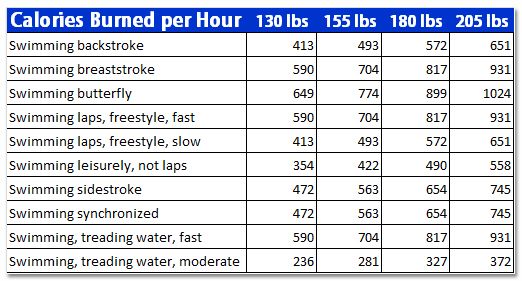


 55, or moderately active (moderate exercise 3–5 days per week)
55, or moderately active (moderate exercise 3–5 days per week)
 55, or moderately active (moderate exercise 3–5 days per week)
55, or moderately active (moderate exercise 3–5 days per week) 4 kcal per hour per 1 kg of weight.
4 kcal per hour per 1 kg of weight.